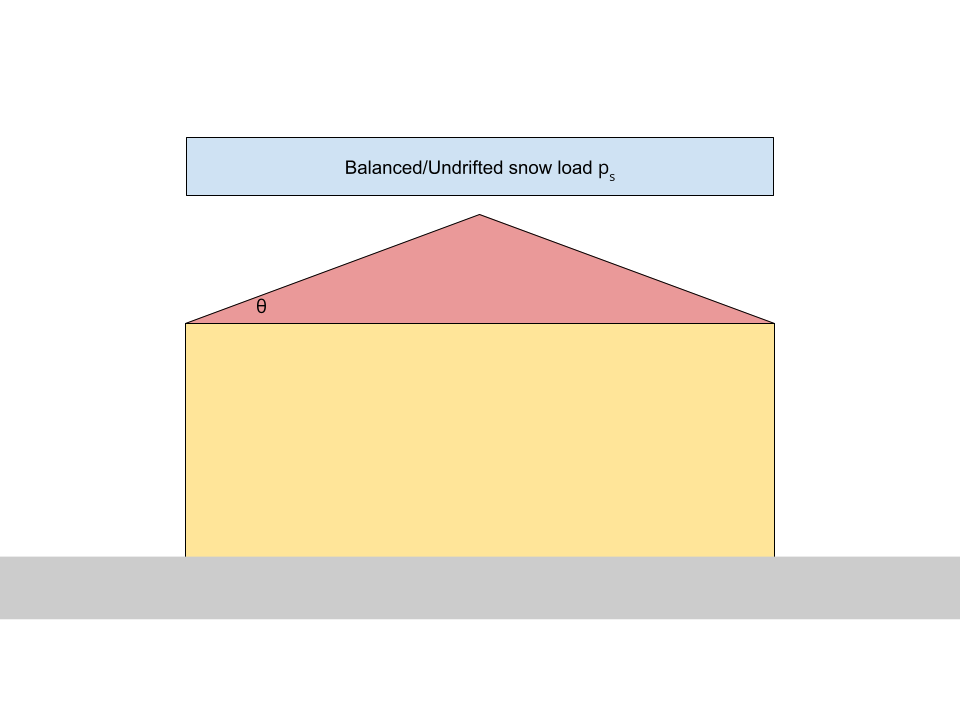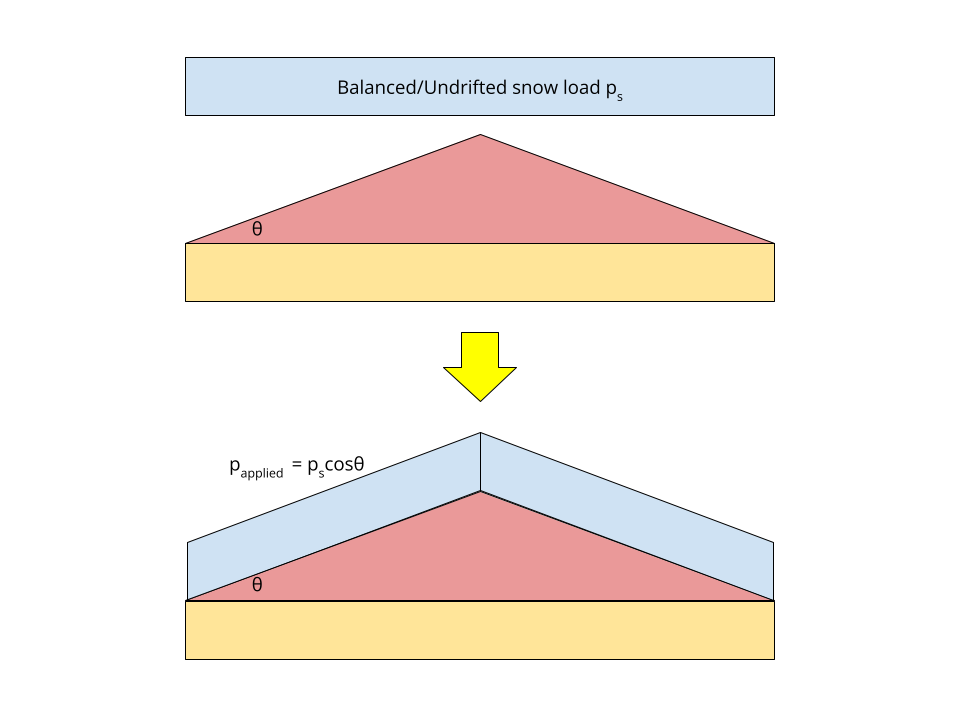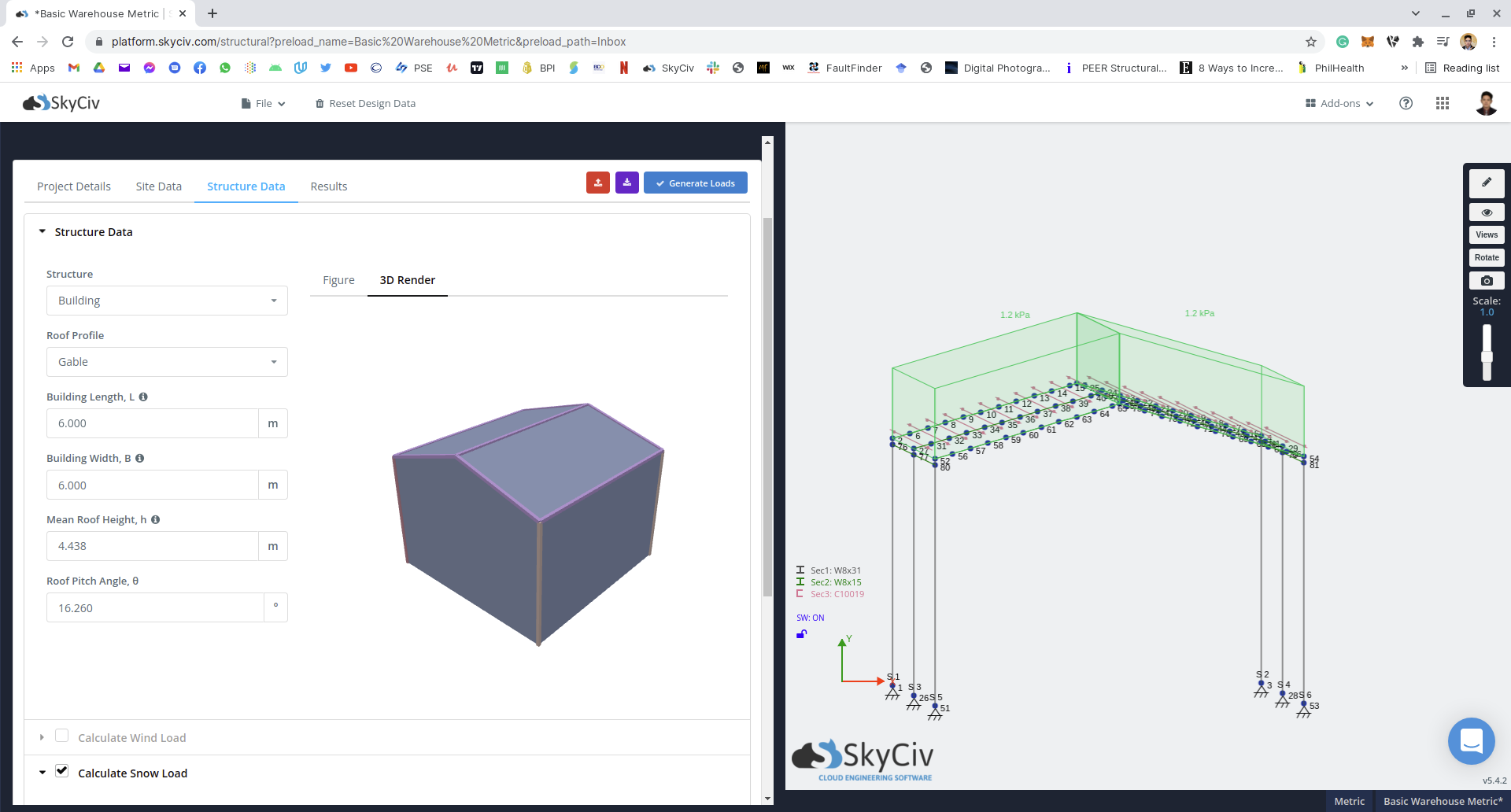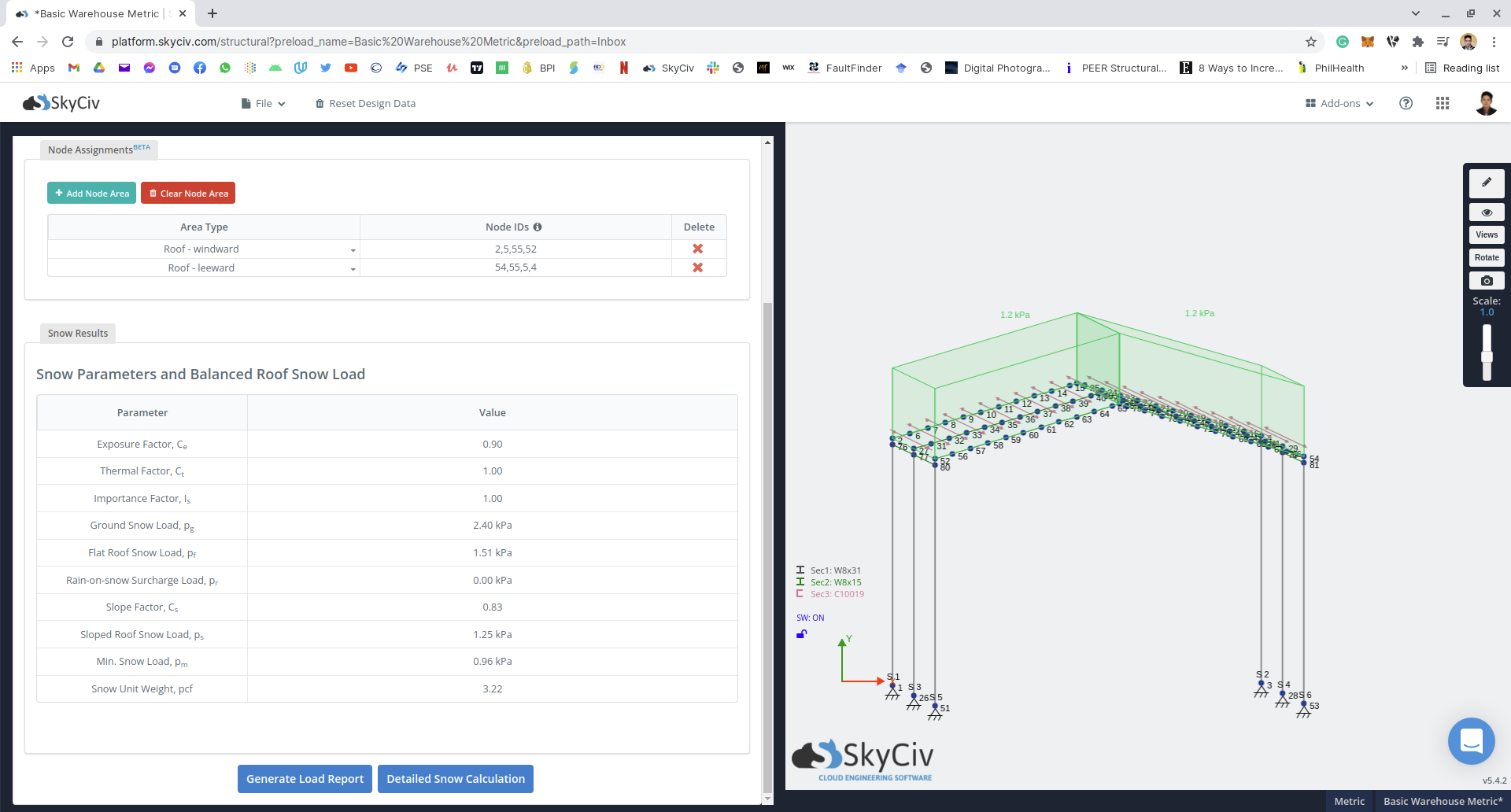Χρήση της γεννήτριας φορτίου για φορτία χιονιού ενσωματωμένη στο S3D
Στον υπολογισμό των φορτίων χιονιού, το ισορροπημένο ή μη παρασυρόμενο φορτίο χιονιού στην οροφή θεωρείται πάντα ότι εφαρμόζεται στην οριζόντια προβολή της περιοχής της οροφής με τον ίδιο τρόπο που εφαρμόζονται τα ζωντανά φορτία. 
Προκειμένου να εφαρμοστεί το φορτίο χιονιού στην οροφή, πρέπει να μετατρέψουμε την πίεση \({Π}_{μικρό}\) πολλαπλασιάζοντάς το με την τιμή του συνθ. 
Χρήση του SkyCiv Load Generator στο S3D
Για Επαγγελματίες χρήστες λογαριασμών, μπορείτε να αποκτήσετε πρόσβαση στο Load Generator μέσω των τμημάτων φόρτωσης περιοχής στο S3D. Από την ενότητα, δημιουργώντας το ισορροπημένο/μη παρασυρόμενο φορτίο χιονιού \({Π}_{μικρό}\) εφαρμόζεται αυτόματα εφόσον η στέγη προσήνεμοι και υπήνεμοι κόμβοι ορίζονται οι το Εκχωρήσεις κόμβων τραπέζι.

Ο κανόνας για τον καθορισμό των προσήνεμων και υπήνεμων κόμβων στέγης φαίνεται παρακάτω:


Επομένως, Το αντίστοιχο φορτίο χιονιού που εφαρμόζεται φαίνεται παρακάτω:

Από αυτό το μοντέλο, το εξισορροπημένο/μη παρασυρόμενο φορτίο χιονιού \({Π}_{μικρό} = 1.25 kPa ) μετατρέπεται πολλαπλασιάζοντας την τιμή του συνημιτόνου του Γωνία κλίσης οροφής θ ίσο με 0.9603. Επομένως, το αντίστοιχο φορτίο χιονιού οροφής είναι ίσο με \( p = 1,20 kPa). Χρήση φορτίου ανοιχτής περιοχής, στη συνέχεια εφαρμόζεται στην επιφάνεια της οροφής του μοντέλου. Για την ανισόρροπη/παρασυρόμενη υπόθεση, είναι απαραίτητη η χειροκίνητη εισαγωγή. Αυτή η δυνατότητα είναι διαθέσιμη μόνο στην ASCE 7-10, ASCE 7-16, NBCC 2015, ΣΕ 1991, και AS / NZS 1170.
Δομικός μηχανικός, Ανάπτυξη προϊόντων
MS Πολιτικών Μηχανικών
βιβλιογραφικές αναφορές:
- Αμερικανική Εταιρεία Πολιτικών Μηχανικών. (2017, Ιούνιος). Ελάχιστα φορτία σχεδιασμού και συναφή κριτήρια για κτίρια και άλλες κατασκευές. Αμερικανική Εταιρεία Πολιτικών Μηχανικών.


